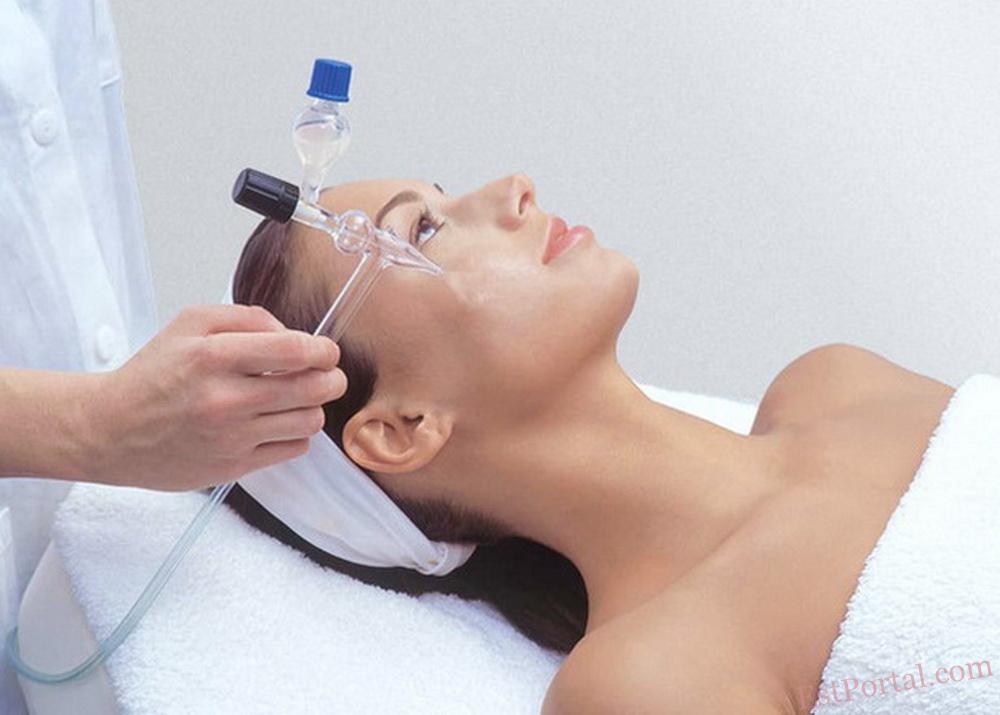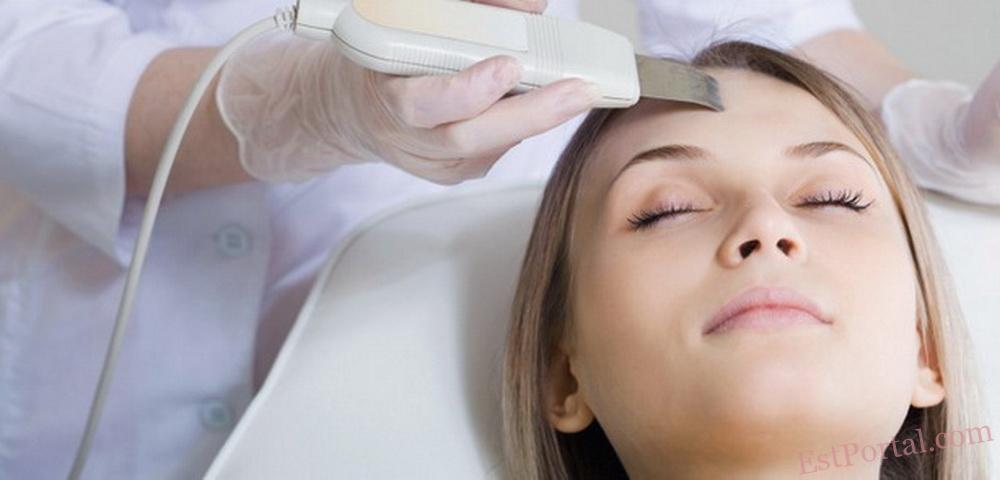
Is It Safe to Get a Peel in Summer?
When professional peels are performed in summer, the skin’s barrier layer experiences significant stress. The skin becomes even more vulnerable to the damaging effects of ultraviolet radiation. In addition, melanocytes become more active, which can lead to the appearance of pigmentation spots even without direct sun exposure. That’s why, until recently, the answer to the question “Can you get a peel in summer?” was a definite no. However, today experts say that summer peels are possible. Still, there are only a few types of procedures suitable for the season, and there must be truly valid reasons for performing them.
The decision on whether a peel can be done in summer should be made only by a cosmetologist. They will assess the necessity of the procedure, the condition and individual characteristics of your skin, and the risk of pigmentation spots. It’s important to note that hyperpigmentation is a common, but not the only, complication after peels. A much more serious one is so-called heliodermia — or photoaging. However, there is some encouraging data: for example, in California and Israel, where the sun is extremely intense and people with darker, pigmentation-prone skin are very common, professionals believe that peels can be performed in summer.
People with oily, problematic skin know that sun exposure significantly increases sebaceous gland activity. That’s why their desire to take advantage of peeling treatments in summer is completely understandable. Sometimes, a peel is needed to treat fresh acne scars and post-acne marks. If the scars mature, the procedures may no longer be as effective. The main rule is that summer peels should only affect the stratum corneum and must not damage the dermis. Even after the gentlest formulations, it is essential to use sun protection with the highest SPF and avoid direct sun exposure — something a wide-brimmed hat can help with perfectly.
Jet Peel (Gas-Liquid Peeling)
When discussing whether hardware-based peels can be done in summer, the first method worth mentioning is gas-liquid peeling (Jet Peel), which has earned a strong reputation as an all-season procedure. This technique is especially recommended for dry, reactive skin and can even be used in the presence of localized inflammation. Surface and deep cleansing, which improve both the condition and appearance of the skin, are achieved through a cooled jet of saline and oxygen — even the eyelids are treated. Visible results often appear after the first session, but to achieve lasting effects, a course of 5 to 10 sessions is recommended every one to two weeks. The results typically last for about six months, after which the course can be repeated. Jet Peel is also recommended for treating fresh scars, as its developers claim regenerative and immunomodulatory effects. This peel can be safely performed in summer before sunbathing or visiting a solarium, as it helps create a smooth skin surface and ensures an even tan.
Ultrasound Facial Cleansing
When discussing which peels can be done in summer, it’s worth mentioning treatments that use ultrasonic waves. The wave removes dead skin cells and improves blood circulation in the epidermis. Depending on the skin type, different preparations are applied before the procedure: antibacterial for oily skin and moisturizing for dry skin. Ultrasonic peeling is a very gentle technique that can’t be considered radical. That’s why it’s usually not performed as a course of sessions — instead, it’s often integrated into the protocols of other facial treatments.
Laser Peel
A much more radical technique is laser peeling. Clinics often claim that it can be done in summer, but both the cosmetologist and the patient must approach the decision with great care. Laser stimulation promotes the production of elastin and collagen fibers and is suitable even for the most sensitive areas — around the eyes and lips. Laser peeling is more expensive, but it allows for localized treatment of specific zones. Typically, 3 to 5 sessions are needed, spaced two weeks apart. After the procedure, the skin may remain red for several hours, and post-treatment care must be as gentle as possible.
Mesopeel
Mesotherapy with glycolic acid provides all the benefits of a peel without seasonal restrictions. That’s why, when asked “Can you get a peel in summer?”, cosmetologists confidently answer yes — the procedure causes neither redness nor peeling. Moreover, mesopeel does not compromise the skin’s natural barrier. This technique can even be safely performed on tanned skin, whereas the most delicate peels are usually done only after the tan has completely faded. During the first two months, treatments are performed every two weeks, followed by once a month for the next three months.
Oksana Zakharova, dermatologist and cosmetologist:
In modern cosmetology, peels have not only retained their relevance but have become an essential part of any treatment course. After all, the result is smoother skin, reduced pigmentation, tightened pores — in short, a fresh, radiant, and firm-looking face. Even a single peel session increases the skin’s ability to absorb active ingredients. At the same time, however, it becomes more vulnerable to environmental stressors. The most significant among them is ultraviolet radiation. Even with regular use of high-SPF sunscreen, pigment spots may still appear. That is why a professional cosmetologist will always caution their patient against certain types of peels during the summer months, opting instead for gentler procedures or exfoliating treatments suitable for home use.
Yes, all types of medium and deep exfoliation are strictly recommended for the autumn–winter season only. These include chemical peels with trichloroacetic acid, salicylic acid, retinoic acid, or phenol; coral peeling; laser resurfacing; and all types of dermabrasion (mechanical exfoliation using aluminum oxide crystals).
When discussing which peels can be performed in summer, it is worth noting that superficial fruit acid peels (AHA acids) may be allowed during the hot season for skin phototypes I–II, provided that high-SPF sunscreens are used regularly and only under the supervision of a licensed cosmetologist, with strict adherence to their recommendations, including an assessment of the procedure’s necessity and potential risks. It is important to emphasize that all types of chemical peels can only be performed in summer at least two to three weeks before sun exposure, to reduce the risk of pigmentation. In most cases, during the summer, your cosmetologist will recommend gentler cleansing treatments such as ultrasound facial cleansing, brushing (brossage), enzyme peeling, desincrustation (galvanic therapy), or jet peel.
When considering which peel can be done in summer, don’t forget that you can also enhance skin permeability for subsequent cream application at home by using well-known scrubs and gommages. Scrubs are more suitable for oily skin, as they contain solid abrasive particles. For thin, sensitive skin, a gentler cosmetic option — a gommage — is more appropriate.
During periods of increased sun exposure, we tend to notice imperfections in our skin more acutely. That’s why the desire to undergo a peeling treatment in summer — to “wake up” the skin after a long autumn–winter season — is completely understandable. However, it’s much wiser to prepare the skin for summer in advance, thus avoiding unwanted side effects and not risking heading off on a long-awaited vacation with blotchy skin and a ruined mood!
Chemical Peels
When it comes to performing non-hardware peels during summer, it’s important to recall the basic rules:
- First, the procedure must be approved by an experienced cosmetologist.
- Second, the peel should be light, exfoliating, and absolutely non-traumatic.
Experts particularly recommend gluconic acid peeling for summer, as gluconic acid helps prevent the damaging effects of ultraviolet radiation on elastin fibers. A typical course includes 6 to 10 sessions performed once a week. Ferulic acid peel has a similar effect — it combats photoaging and can help prevent hyperpigmentation.
Phytic, coral, lactic, mandelic, and enzymatic peels are also acceptable. The latter are particularly suitable for home use, provided they are selected from professional skincare lines:
- Phytic peels are available from Medic Control Peel, Sweet Skin System, Renew, and CRC.
- Mandelic peels — from MedicControlPeel, OTI, Mediderma, and Renophase.
- Lactic peels are offered by Ultraceuticals and Dermaquest Skin Therapy.
- Coral peels — by Christina and Vita Activa Sea Peeling.
- Enzymatic peels — from Reneetov, Janssen, Renophase, and Pevonia Botanica.
A new generation of biological peels has also recently appeared — based on sponge-derived Badyaga and enhanced with silicon microcrystals — which can be used during periods of high sun exposure.
Viktoria KOZYR
First published: 2016
Updated in 2025 to reflect current guidelines and recent scientific research











